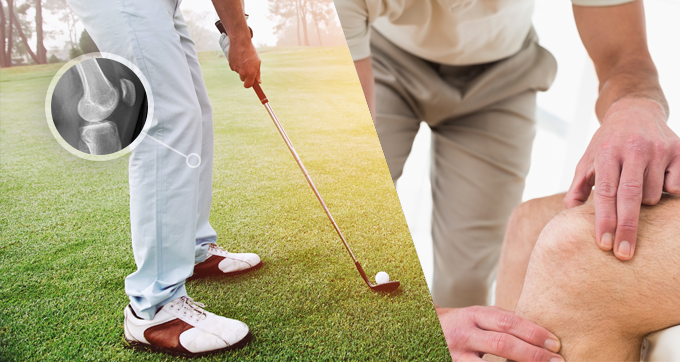By Franciscan Health
Even if you aren’t an athlete, your joints suffer normal wear and tear. An estimated 54.4 million adults in the United States have doctor-diagnosed arthritis.
Osteoarthritis is the common wear-and-tear form of arthritis, where the cartilage cushioning the joints gradually breaks down. The process can lead to inflammation, pain and stiffness; eventually, bones may start rubbing against each other, causing more joint damage and disability.
Fortunately, osteoarthritis sufferers have effective treatment options for arthritis in the knee available to them.
Treating Knee Arthritis Without Surgery
There is no cure for osteoarthritis, and treatment for arthritis in the knee involves managing the symptoms through weight loss, exercise and nonsteroidal anti-inflammatory drugs like, ibuprofen and naproxen. Injections of corticosteroids, which reduce inflammation, or sodium hyaluronate, which helps lubricate and absorb shock within the knee joint, are also options.
According to Franciscan Health orthopedic surgeon William Payne, MD, the standard approach for new patients is to first employ conservative treatments, such as anti-inflammatory medications, physical therapy and exercise.
“The key thing is to do the conservative treatment for three months in an effort to preserve the joints,” Dr. Payne said. “But if the arthritis worsens and conservative treatment fails, we recommend surgery as soon as possible to expedite that patient’s return to his or her lifestyle.”
Knee Replacement Surgery
Doctors perform more than 800,000 knee and hip replacements every year, and that number is expected to grow. New materials for artificial knees and hips can last 25 to 30 years. With joint replacement surgery, many people with severe arthritis can resume a full and active life.
That’s exactly what happened to Darlene Anderson-Moon, a Park Forest, Illinois, resident with psoriatic arthritis in both knees. For several years, the Euflexxa injections she received from Dr. Payne were helping her to preserve her lifestyle, but the pain continued to get worse.
“Darlene’s pain got to the point where it was interfering with her quality of life and everyday activities,” Dr. Payne said. “In early 2020, it was clear that a knee replacement would be a good way to improve her function and reduce her pain.”
A total knee replacement was completed on her right knee in March 2020.
Recovering From Knee Replacement
After a short hospital stay, Darlene received rehabilitation therapy at home. The retired Chicago Public School teacher and administrator then continued her physical therapy at Franciscan Health Outpatient Therapy Clinic Center Homewood.
“Recovery involves learning how to bend your knee again,” Dr. Payne said. “There’s some swelling after surgery, so we quickly work on regaining as much motion as we can. The big thing is to eventually restore your lifestyle so you can improve your quality of life and do the things you stopped doing because of the pain.”
Darlene has now fully recovered and said,
“Today, I don’t have any pain in my right knee and at my last appointment with Dr. Payne, he said my flexibility was very good.”
Surgery may not always be the best solution, but when necessary, it is advisable.










